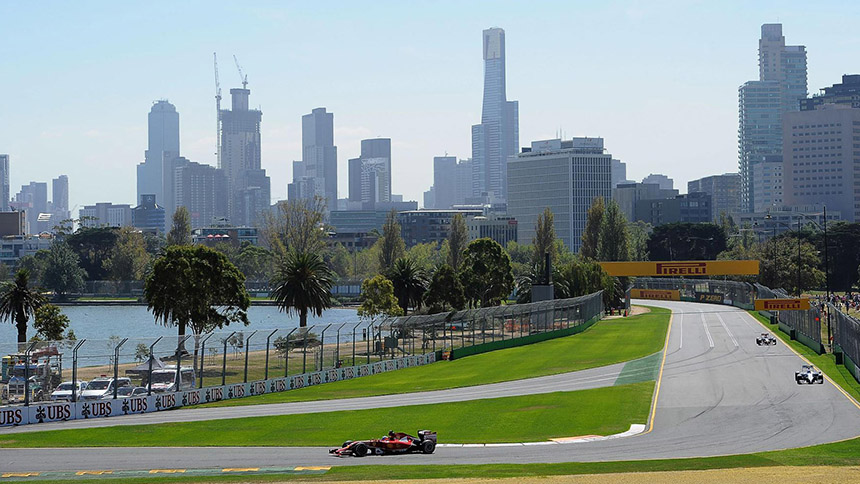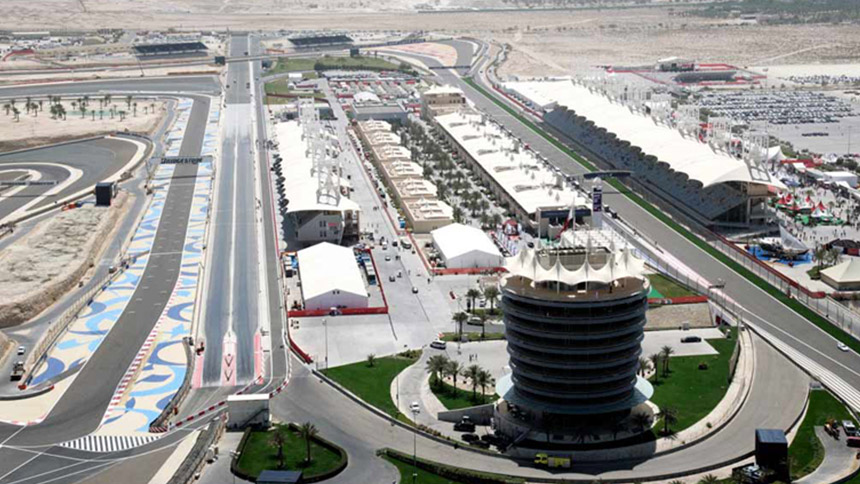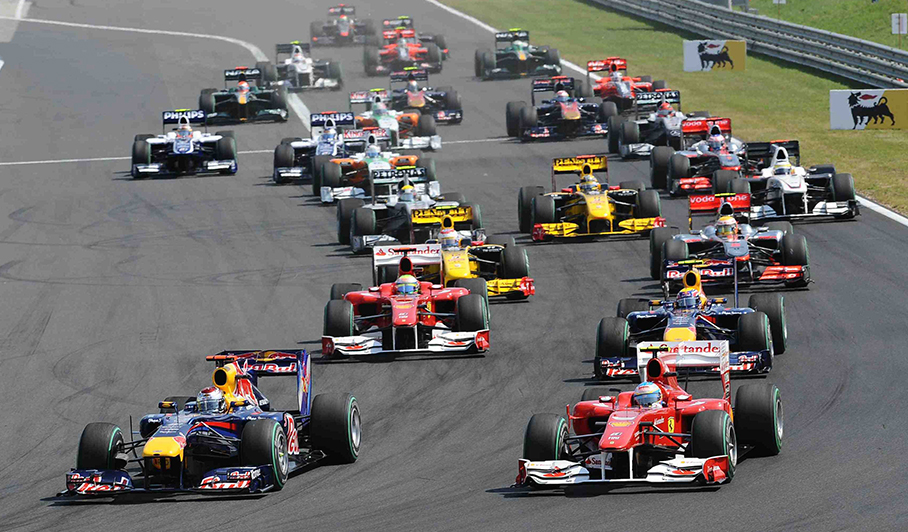The new Formula 1 season is set to get underway on March 20th, and there are some new additions for the 2016 Formula 1 tracks along with the usual circuits. Before the season kicks off in Australia, let’s take a look at all the 21 thrilling tracks we will see in 2016.
(Image credit: Playbuzz)
Melbourne Grand Prix

(Image credit: Motor Authority)
Formula 1 races have taken place in Australia since 1985, but it wasn’t until 1996 that F1 was introduced to the Melbourne circuit. This will be the 21st year teams will race on Grand Prix circuit in Melbourne.
Bahrain International Circuit

(Image credit: KHP Consulting)
This is an exciting one. The Bahrain International Circuit became the first-ever Formula 1 track to be held in the Middle East, when it was introduced as racecourse in 2004. The track is especially known for its sharp turn after the long-stretch, which sees drivers go from 300 km/h+ to a virtual stand-still.
Shanghai International Circuit
(Image credit: F1 Destinations)
The track in China has two similarities to that of Bahrain’s track: active since 2004 and an extremely sharp turn follows a long straight line. There are lots of twists and turns in other parts of the circuit, which make it a marvel among Formula 1 tracks for drivers.
Sochi Autodrom
(Image credit: F1 Fanatic)
The Russian Grand Prix become a member of the F1 family pretty recently – 2014.this track is not particularly interesting in my opinion, but hey, what do I know. I’ve never even sat in an F1 car or been on this circuit.
Circuit De Barcelona Catalunya
(Image credit: JDC Promotions)
Barcelona’s circuit has been associated with F1 since 1991, so it has a long-standing tradition in the sport. More importantly, all the teams and drivers know the track very well, as they conduct regular tests on it.
Circuit De Monaco
(Image credit: Biser3a)
This is the most iconic and, in my opinion, the best F1 circuit on the list. Races here have been staged since 1950, and the factor that provides the unstoppable exhilaration is just how close the cars are to the walls. This leaves no margin for error; one mistake, and you’re out! Whoever masters this course can consider themselves a cut above the rest.
Circuit Gilles-Villeneuve
(Image credit: Autofocus)
The Canadian Grand Prix is a well-known venue for teams, having hosted F1 races since 1978. The track itself is quite interesting; it features a long straight and has plenty of corners that you have to know how to manoeuver around. This is one of the traditional Formula 1 tracks.
Baku City Circuit
(Image credit: Formula 1)
The latest addition to the Formula 1 tracks is the Baku City Circuit, which is actually dubbed the grand Prix of Europe. Just like Monaco or some other towns, this race takes place within the city itself, so drivers will have to be extra careful not to make any mistakes. It’s scheduled to take place on June 19th, so make sure you tune in to watch the race on this new exciting track.
Red Bull Ring
(Image credit: F1 Madness)
The first race held on the Austrian Grand Prix was back in 1970. But to be honest the track doesn’t look too appealing; it’s too simple, despite there being a few tight corners which are probably challenging for some drivers. I’m guessing if I were to sit in an F1 car and drive around here it would probably take me 10 minutes just to go around the track.
Silverstone Circuit
(Image credit: F1 Fanatic)
The British Grand Prix was introduced as part of the Formula 1 tracks the same year as Monaco – 1950. This is another traditional circuit that features tons of corners and some decent straight lines. Mark Webber set the record for the fastest lap on this course in 2013 – 1:33.401.
Hungaroring
(Image credit: Rach F1)
Hungary hosted races in the 1930s, however that came to a halt during World War II and the Iron Curtain period. After negotiations failed to have one of the Formula 1 tracks in Moscow, Budapest became the new choice, and in 1986 that became a reality. Since then, it has become an iconic race track in the sport with very characteristic turns before and after the straight line.
Hockenheimring
(Image credit: Photography, I share thee)
The Germany Grand Prix is one of the most recognizable Formula 1 tracks in the sport and a favourite for many drivers. It has a few short straight lines and lots of corners, but the most interesting thing about it is Sector 2, which features a prolonged curve that culminates in an almost 180 degree turn. Only the most experienced drivers can pass through this turn with ease and speed.
Circuit De Spa-Francorchamps
(Image credit: Leger Holidays)
The Grand Prix of Belgium when viewed from above resembles the submachine gun Uzi. Drivers have to pass through lots of corners, so they’re constantly swaying left and right. The track offers many opportunities for overtaking, although there is only one straight line.
Autodromo Nazionale Monza
(Image credit: Msports)
Thousands of fans turn up for this race, as this is the home of Ferrari. Even footballer Mario Balotelli missed an important meeting with then Inter manager Jose Mourinho, just to attend the thrilling racing event. Mourinho recalled, “I told him to be at 2pm in my office for a meeting and when I called him he’d gone to the Formula 1 qualification on the Saturday for the race on Sunday. He said, ‘meetings in your office I can have every day, but to see the Formula 1 is only once a year in Italy.’ ” This tells you everything you need to know about Monza.
Marina Bay Street Circuit
(Image credit: Formula 1)
Singapore Grand Prix joined the party pretty recently, in 2008. But is offers all sorts of exciting elements that some other circuits lack. The race itself takes place in the city, so it’s just like Monaco. If you make one mistake, you’re out! There are lots of tight corners, so accidents are pretty common on this circuit. But the most intriguing aspect about Marina Bay Street Circuit is that it’s held at night, making this a truly unique event that you should not miss!
Sepang International Circuit
(Image credit: The F1 Spectator)
Malaysia has been a part of the Formula 1 family since 1999, and the track itself is brilliant in every respect. There are two long straights that are interrupted by a 180 degree turn, making this one of the most challenging Formula 1 tracks.
Suzuka International Racing Course
(Image credit: Formula 1)
Japan’s Suzuka track first held a Grand Prix event in 1987, and has since then become a favorite for some drivers. The thing that separates it from some of the rest is that it incorporates a bridge and has cars pass on it and under it. It features some of the most challenging corners, which puts the drivers’ skills to the ultimate test.
Circuit of the Americas
(Image credit: Heritage Office Suites)
America used to host a Formula 1 Grand Prix until 2007, but then it was discontinued until the 2012 season. It has a long straight line, while on the other side it has tons of smaller turns, allowing more skilled drives to take advantage of this at times.
Autodromo Hermanos Rodriguez
(Image credit: The National)
The first Mexican Grand Prix took place in 1963, and the interesting thing about this track is that is features many corners and stretches for such a small circuit length – 4.3 km. Drivers here can engage in many overtaking opportunities, which offers great excitement for the fans.
Autodromo Jose Carlos Pace
(Image credit: F1 Madness)
Brazil’s Grand Prix is another among the most iconic Formula 1 tracks. This is the home of Ayrton Senna, and the place where we witnessed many drivers become world champions. Although this track is relatively simple in design, it still boasts enough interesting features that make for an exciting F1 race.
Yas Marina Circuit
(Image credit: wtf1)
For the past few seasons, the final race has taken place at the Abu Dhabi circuit. The land where you can see tons of expensive and fast cars, it is no surprise then that the racetrack itself has a long stretch allowing drivers to test their cars’ speed. And the cool thing about this one is that cars have to pass under a hotel at one point on the track. Drivers have to be alert at all times, because there are many mind-boggling twists and turns that have at times seen collisions. All in all, it’s a fitting finale to the Formula 1 season.
